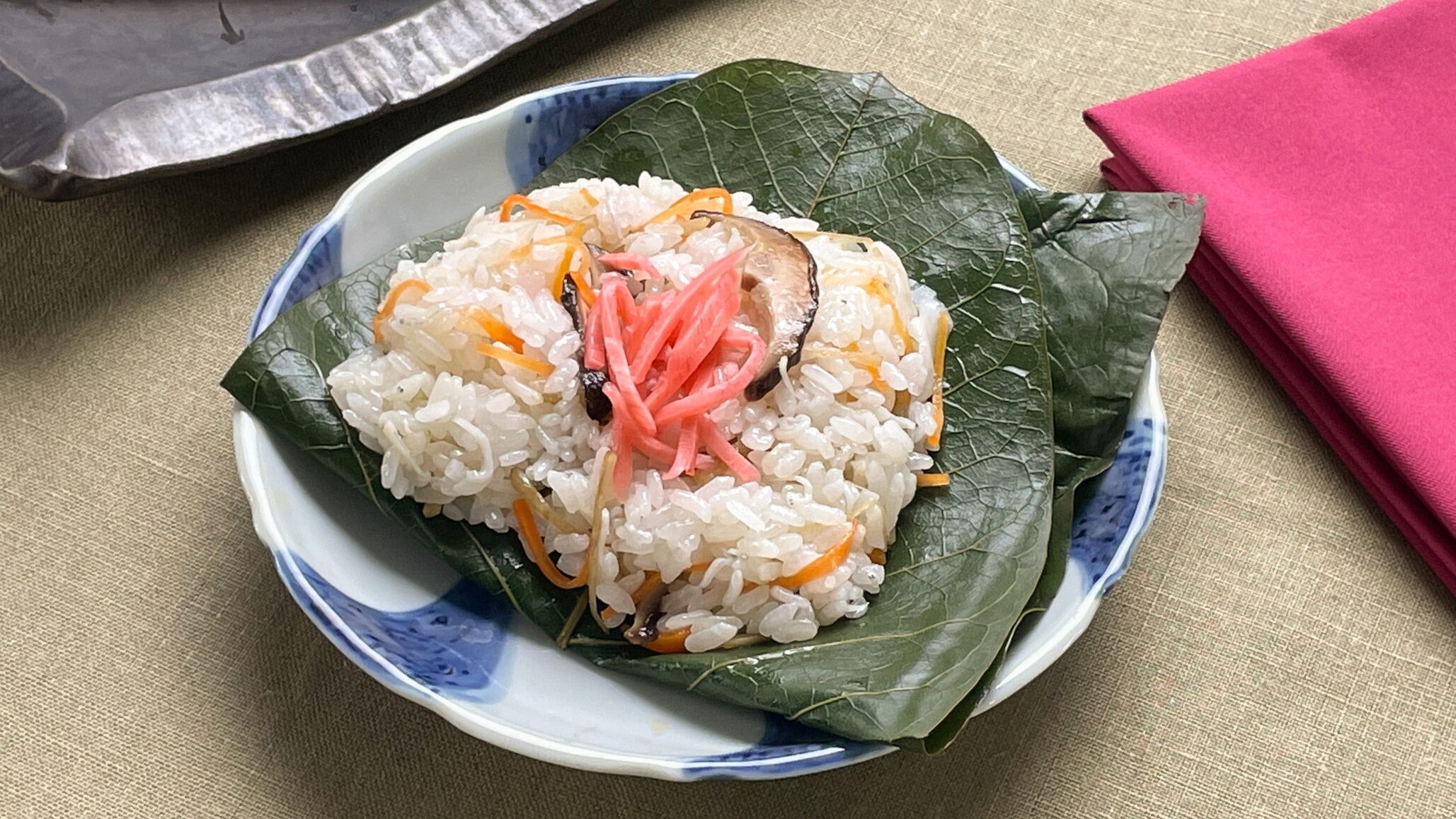
Imagine a fragrant leaf cradling seasoned rice, a simple yet satisfying bite that tells a story of the land and its people. This is Hoba Zushi, a regional specialty that has nourished communities for generations. It’s more than just food; it’s a taste of Gifu’s history and traditions, wrapped up in the unique aroma of a hoba leaf.
Dish Name: Hoba Zushi
- Region / Location: Gifu Prefecture
- Primary Area of Tradition: Southern Hida region to Chuno region
- Main Ingredients: Rice, hoba leaves, vinegar
How It’s Eaten / Served
Hoba zushi is typically enjoyed by unwrapping the fragrant hoba leaf and eating the seasoned rice inside. In the Tono region, you’ll often find a colorful array of toppings on the rice before it’s wrapped, such as sweet simmered river fish, vinegared mackerel, shredded thin omelet, and pickled ginger. However, in the Hida region, a simpler preparation with just vinegared rice and Japanese ginger (myoga) is preferred for its refreshing taste. The way the leaf is folded also varies, from simply folding it in half to creating a neat square package. What remains consistent is the use of the distinctive hoba leaf.
Cultural Background and Preservation
Hoba zushi is a seasonal dish, particularly popular from May to August when the hoba leaves boast their best color and aroma. It has deep roots in the agricultural practices of the region, serving as a convenient and satisfying meal for farmers during busy times like rice planting. The hoba leaves weren’t just for wrapping; they also offered practical benefits. They possess natural antibacterial and anti-mold properties, thanks to an enzyme called “hinokitiol.” This was especially valuable during the hot and humid rice-planting season when food spoilage was a concern. Because the leaf acts as a natural plate, hoba zushi was also ideal as a portable meal for those working in the mountains or fields, eliminating the need for utensils. Historically, it’s believed that the earliest form of hoba zushi was quite simple, featuring vinegared rice topped with salted salmon that had been brought from the Hokuriku region and cured with vinegar.
Efforts to preserve and pass on this culinary tradition are evident throughout Gifu Prefecture. Hoba zushi is a featured item in school and kindergarten lunches. In Ena City, the cooking process is demonstrated in online videos to reach a wider audience. Additionally, from mid-May to July, hoba zushi is readily available at local farmers’ markets and restaurants in the Tono region and surrounding areas.
Additional information:
- Hoba leaf: The large leaf of the Japanese bigleaf magnolia tree (Magnolia obovata). It has a distinct aroma and is used for wrapping food.
- Vinegared rice (Sushi rice): Cooked white rice that has been seasoned with rice vinegar, sugar, and salt. It’s the base for many types of Japanese sushi.
- Sweet simmered river fish (Kanroni): Small river fish that are slowly simmered in a sweet soy sauce-based sauce until tender and glazed.
- Shredded thin omelet (Kinshi tamago): Very thinly cooked and sliced egg crepes, often used as a colorful topping in Japanese dishes.
- Pickled ginger (Beni shoga): Ginger that has been pickled in a sweet vinegar solution and dyed red. It’s often served as a palate cleanser with sushi.
- Japanese ginger (Myoga): A type of ginger with a milder flavor and a slightly flowery aroma. The buds and young shoots are commonly used in Japanese cuisine.
The information about regional cuisine featured on this website (Piggy's Grandma of Japan) is summarized and adapted from the Ministry of Agriculture, Forestry and Fisheries of Japan (MAFF) website, "Our Regional Cuisines"Additional commentary is provided based on the unique experiences and perspectives of the site's editors.
The copyright for the original content regarding regional cuisine belongs to the Ministry of Agriculture, Forestry and Fisheries of Japan.
The summaries and adaptations published on this site are intended for informational purposes only. Piggy's Grandma of Japan does not guarantee the accuracy or completeness of this information. For the most accurate and complete details, please refer to the original pages on the MAFF website.

